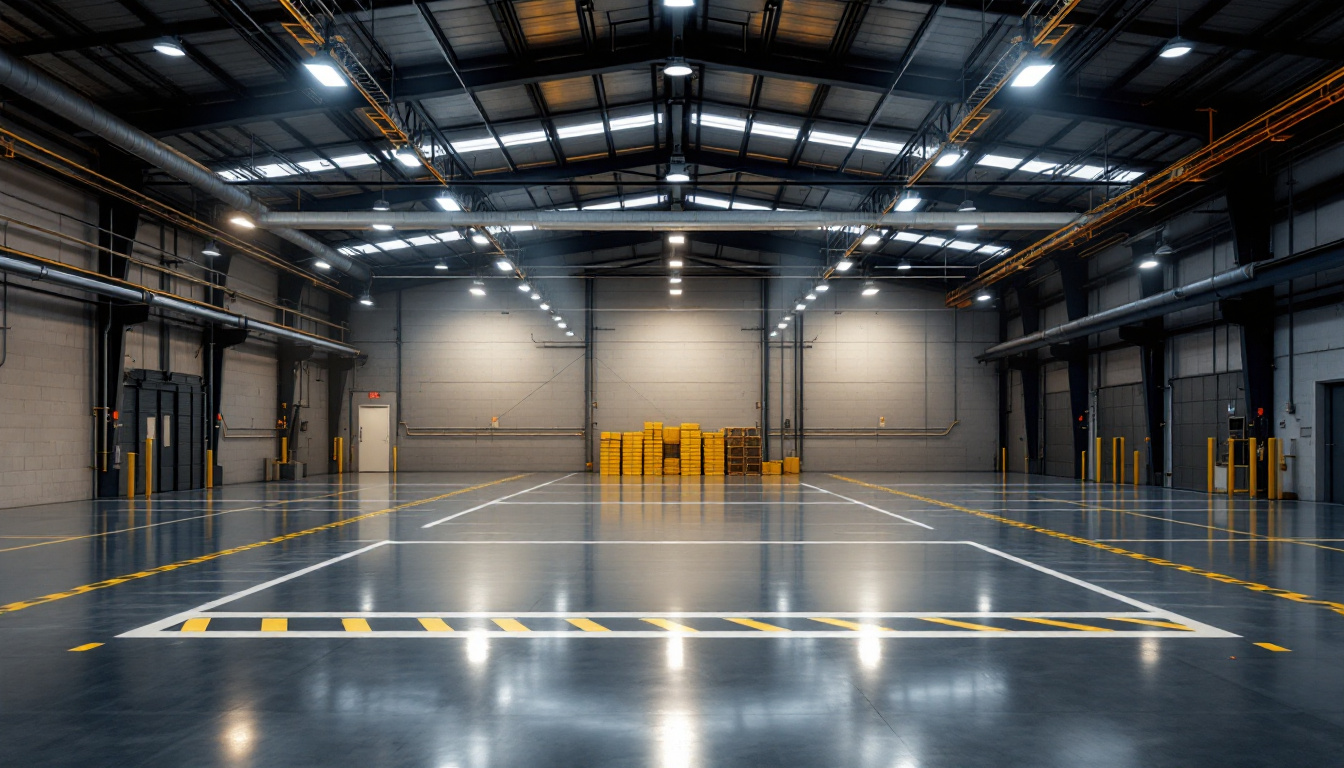
In the world of lighting design and installation, contractors are often faced with a myriad of challenges. While technical skills and knowledge of the latest technologies are crucial, there are several aspects that are frequently overlooked. This article delves into these often-neglected areas, providing insights that can enhance the quality of work and client satisfaction.
One of the most critical aspects that lighting contractors often overlook is the importance of thoroughly understanding client needs. While it may seem straightforward, many contractors jump straight into the technical specifications without taking the time to engage with their clients.
Effective communication is key to grasping the client’s vision. Contractors should prioritize asking open-ended questions that allow clients to express their desires and preferences. This dialogue not only helps in gathering essential information but also builds trust and rapport.
Listening actively to clients can reveal their lifestyle, aesthetic preferences, and functional requirements. For instance, a homeowner may want a cozy atmosphere for family gatherings but also require bright task lighting for their kitchen. Understanding these nuances can lead to more tailored solutions. Additionally, it can be beneficial for contractors to share examples of past projects that align with the client’s vision. This not only provides inspiration but also helps clients visualize the potential outcomes, making them feel more involved in the decision-making process.
Once the needs are understood, it’s essential to set realistic expectations. Clients may have grand visions that are not feasible within their budget or space constraints. By discussing these limitations upfront, contractors can prevent misunderstandings and ensure that the project stays on track.
Providing clients with a clear picture of what is achievable can help in managing their expectations. This may involve presenting alternative options that align with their budget while still delivering on their vision. Furthermore, contractors should consider discussing potential timelines and any factors that could affect the project’s progress, such as sourcing specific materials or the availability of skilled labor. By being transparent about these aspects, contractors can foster a collaborative atmosphere where clients feel informed and empowered to make decisions throughout the project.
Another area where contractors may falter is in the application of lighting design principles. A solid grasp of these principles can significantly enhance the effectiveness of a lighting project.
Layered lighting is a fundamental concept that involves using different types of lighting to create a balanced and functional space. This includes ambient, task, and accent lighting. Contractors often focus heavily on ambient lighting, neglecting the other two layers.
Task lighting is crucial for areas where specific activities take place, such as reading or cooking. Accent lighting, on the other hand, helps to highlight architectural features or artwork. By integrating all three layers, contractors can create a more dynamic and versatile lighting scheme.
In addition to these primary layers, the strategic placement of fixtures can further enhance the layered lighting effect. For example, using pendant lights over a kitchen island not only provides essential task lighting for food preparation but also adds an aesthetic element that can tie the room together. Similarly, wall sconces can serve dual purposes: providing ambient light while also accentuating artwork or decorative elements on the walls. This thoughtful combination of different lighting types ensures that each area of a space is not only functional but also visually cohesive.
The color temperature of light can drastically affect the mood of a space. Many contractors overlook the importance of selecting the right color temperature for different areas. For instance, warmer tones are often preferred in living spaces, while cooler tones may be more suitable for workspaces.
Moreover, the quality of light, including factors such as color rendering index (CRI), should not be ignored. High-quality lighting enhances the appearance of colors and textures, making spaces more inviting and visually appealing.
Beyond just the color temperature and CRI, the directionality of light also plays a significant role in how a space is perceived. Natural light, for instance, is often considered the gold standard for quality, as it changes throughout the day and can create a dynamic atmosphere. Contractors should consider how artificial lighting can mimic this natural variation, perhaps by incorporating dimmers or smart lighting systems that adjust the intensity and color temperature based on the time of day. This not only improves the functionality of a space but also contributes to the overall well-being of its occupants, making them feel more connected to their environment.
With the growing emphasis on sustainability, energy efficiency has become a crucial aspect of lighting design. However, many contractors still overlook this important consideration.
The selection of fixtures plays a significant role in energy consumption. Contractors should prioritize LED fixtures, which are not only more energy-efficient but also have a longer lifespan compared to traditional incandescent bulbs. This choice can lead to significant cost savings for clients in the long run.
Additionally, incorporating smart lighting technologies can further enhance energy efficiency. These systems allow for better control over lighting use, enabling clients to adjust settings based on their needs and preferences.
Understanding and adhering to local energy codes and regulations is essential. Contractors often overlook these requirements, which can lead to costly fines or project delays. Staying informed about the latest regulations ensures that projects are compliant and can help avoid potential legal issues.
Moreover, promoting energy-efficient solutions can be a selling point for clients who are increasingly concerned about their environmental impact. By positioning themselves as knowledgeable in this area, contractors can differentiate themselves from competitors.
The installation phase is where many contractors can make or break a project. Adhering to best practices during installation is vital for ensuring longevity and performance.
Wiring is the backbone of any lighting system, and improper techniques can lead to a host of issues, including flickering lights or even electrical fires. Contractors should ensure that all wiring is done according to code and that they are using the appropriate gauge and type of wire for the application.
Additionally, taking the time to label circuits and fixtures can save considerable time and effort in future maintenance or troubleshooting. This small step can make a significant difference in the overall reliability of the lighting system.
Before completing a project, thorough testing of the lighting system is essential. Many contractors overlook this step, assuming that everything will work as intended. However, testing allows for the identification of any issues that may need to be addressed before handing over the project to the client.
Quality assurance should also extend to the materials used. Ensuring that fixtures and components meet industry standards can prevent future problems and enhance client satisfaction.
Once the installation is complete, the relationship with the client should not end. Providing education and support is an often-overlooked aspect that can lead to long-term satisfaction and referrals.
Clients may not fully understand how to operate their new lighting systems, especially if smart technologies are involved. Taking the time to walk them through the functionalities and features can empower them to make the most of their investment.
Providing user manuals or quick reference guides can also be beneficial. This ensures that clients have the resources they need to troubleshoot minor issues or adjust settings as their needs change over time.
Establishing a follow-up schedule can help maintain a positive relationship with clients. Checking in after a few weeks to see how they are enjoying their new lighting can provide valuable feedback and demonstrate a commitment to customer service.
Additionally, offering maintenance services can be a great way to ensure that the lighting systems continue to perform optimally. This not only benefits the client but can also create a recurring revenue stream for the contractor.
The lighting industry is constantly evolving, with new technologies and trends emerging regularly. Contractors who fail to stay updated risk falling behind their competitors.
Investing in continuing education is crucial for contractors who want to remain relevant in the industry. This can involve attending workshops, seminars, or online courses that focus on the latest lighting technologies and design trends.
Additionally, joining professional organizations can provide access to valuable resources and networking opportunities. Engaging with peers can foster collaboration and innovation, ultimately benefiting the contractor’s business.
New technologies, such as smart home integration and advanced lighting controls, are becoming increasingly popular. Contractors should be proactive in learning about these innovations and how they can be incorporated into their projects.
By embracing new technologies, contractors can offer clients cutting-edge solutions that enhance convenience and energy efficiency. This not only improves client satisfaction but also positions the contractor as a forward-thinking professional in the industry.
Lighting contractors play a vital role in shaping the environments in which people live and work. By focusing on the often-overlooked aspects of client communication, design principles, energy efficiency, installation best practices, client education, and staying updated with industry trends, contractors can elevate their services and ensure long-term success.
Ultimately, a commitment to continuous improvement and attention to detail can set a contractor apart in a competitive market. By addressing these overlooked areas, contractors can enhance their reputation, foster client loyalty, and drive their business forward.
Ready to take your lighting projects to the next level? At LumenWholesale, we provide lighting contractors with the high-quality, spec-grade lighting products you need to exceed client expectations. Say goodbye to inflated markups and hello to unbeatable wholesale prices. Our extensive selection not only meets but surpasses industry standards, ensuring your projects shine with reliability and performance. Plus, with free shipping on bulk orders, you can trust that you’re getting premium lighting at the best value — every time. Elevate your lighting solutions today by visiting Wholesale Lighting at the Best Value and discover the LumenWholesale difference.

Discover expert tips and best practices for installing 8 LED downlights in this comprehensive guide tailored for lighting contractors.

Discover the essential factors in determining the right number of high bay lights for your space.

Explore the revolutionary journey of the light bulb’s invention and its transformative impact on the lighting industry.

Discover the secrets to mastering industrial style lighting with expert insights for lighting contractors.